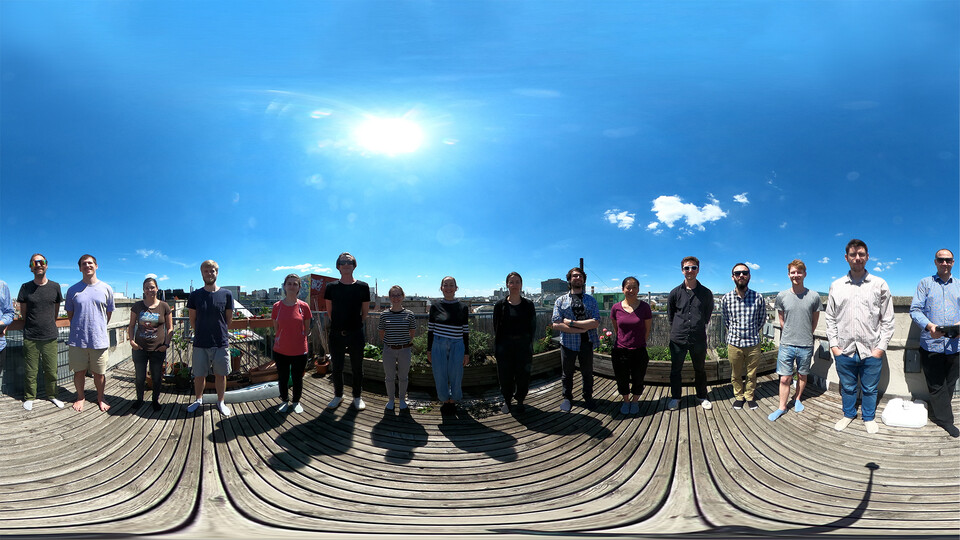
In 1933, science fiction author H.G. Wells imagined, in his book “The Shape of Things to Come”, how the history of the world would culminate in the vision of a utopian society in the year 2106. 36 years later, American musician Ornette Coleman published his ground-breaking record “The Shape of Jazz to Come”, reimagining the genre of jazz music. Breaking with the historical traditions of jazz, he combined unusual tunings, instruments and arrangements, laying the foundations of what would become improvisational and free jazz. The Menche Lab’s take on “The Shape of Things to Come” brings together computer scientists and digital artists, as well as biologists and mathematicians in a mixed reality exhibition to reflect on how their work might shape our future and how this future might look.
“We wanted to capture two aspects in the title of the project. One is the aspect of shape. From the beaks of Darwin’s finches to the first diffraction images of the DNA double helix - an astute observation of shape has always been important in science. Secondly, we wanted to ask the question what the actual outcome of our work is. Do we contribute to a good or a bad future?”, Jörg Menche explains.
Jörg’s team is a multidisciplinary hub of scientists and artists from different fields who work on the quantitative modelling of biological networks. But what was the motivation behind creating an exhibition project? “Over the years, I found it very inspiring to work at the intersection of art and science. More recently, I felt that these two worlds are more separated than they should be. Both are rooted in creativity, in reflection, and in the goal of trying to understand the world and our position in it. I feel they are more similar than we sometimes like to believe. The exhibition is an experiment to see whether we can bring these two worlds into greater contact with each other."
Asked what kind of responses he hopes the exhibition triggers in a visitor he adds: “After working with my team for many years I'm still amazed what we can create with augmented and mixed reality technologies. Not being a biologist by training, I’m also fascinated by the technologies of molecular biologists and how they can manipulate cells and living systems. With 'The Shape of Things to Come' we want visitors to feel the same amazement about what both scientists and artists can create. On both sides of this somewhat unreasonable divide, there are interesting and talented people who think deeply about the world. I hope that visitors will feel inspired by interacting with these two worlds.”